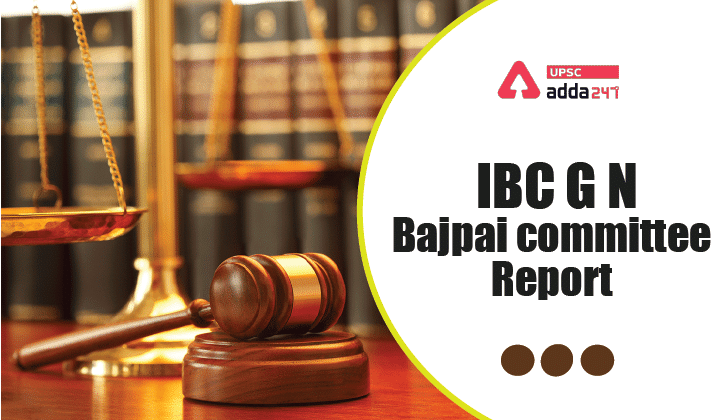Table of Contents
Insolvency and Bankruptcy Code 2016: Relevance
- GS 3: Indian Economy and issues relating to planning, mobilization, of resources, growth, development and employment.
Insolvency and Bankruptcy Code 2016: Context
- GN Bajpai headed committee has recommended that the Insolvency and Bankruptcy Board of India (IBBI) should come up with a standardised framework to assess the success of the five-year-old law and improve its implementation.
GN Bajpai Committee Report: Key points
- The framework should comprise of real-time data bank, with data on time, cost and recovery rates together with macroeconomic indicators.
- The committee emphasised that resolution of the distressed asset remains the first objective of the Insolvency and Bankruptcy Code 2016 (IBC), followed by promotion of entrepreneurship, availability of credit and balancing the interests of stakeholders.
- The committee has recommended that reliable real-time data is essential to assess the performance of the insolvency process.
- Also, it suggested that the IBBI should consider including quantitative data on cost indicators such as resolution professional’s fees, asset storage and preservation costs in its quarterly updates in line with international best practices.
- It said use of indicators such as number of new companies registered, credit supply to stressed sectors such as real estate, construction and metals, change in the cost of capital, particularly for stressed sectors, the status of non-performing loans, employment trends, size of the corporate bond market and investment ratio for the related sectors.
- The group also recommended a national dashboard of insolvency data by using the existing data sources to the extent possible.
Impact of US Inflation in India
Insolvency and Bankruptcy Code 2016
- Insolvency and Bankruptcy Code 2016 (IBC) is the bankruptcy law of India which seeks to consolidate the existing framework by creating a single law for insolvency and bankruptcy.
- The Insolvency and Bankruptcy Act is a one stop solution for resolving insolvencies which previously was a long process that did not offer an economically viable arrangement.
- The code aims to protect the interests of small investors and make the process of doing business less cumbersome.
India Rejects WTO Draft on Fishery Subsidy
Insolvency and Bankruptcy Code 2016: Key features
- Insolvency resolution: For companies, the process will have to be completed in 180 days, which may be extended by 90 days, if a majority of the creditors agree.
- For start-ups (other than partnership firms), small companies and other companies (with asset less than Rs. 1 crore), resolution process would be completed within 90 days of initiation of request which may be extended by 45 days.
- Insolvency regulator: The Code establishes the Insolvency and Bankruptcy Board of India, to oversee the insolvency proceedings in the country and regulate the entities registered under it.
- The Board will have 10 members, including representatives from the Ministries of Finance and Law, and the Reserve Bank of India.
- Insolvency professionals: The insolvency process will be managed by licensed professionals. These professionals will also control the assets of the debtor during the insolvency process.
- Bankruptcy and Insolvency Adjudicator: The Code proposes two separate tribunals to oversee the process of insolvency resolution, for individuals and companies:
- the National Company Law Tribunal for Companies and Limited Liability Partnership firms; and
- the Debt Recovery Tribunal for individuals and partnerships.




 TSPSC Group 1 Question Paper 2024, Downl...
TSPSC Group 1 Question Paper 2024, Downl...
 TSPSC Group 1 Answer key 2024 Out, Downl...
TSPSC Group 1 Answer key 2024 Out, Downl...
 UPSC Prelims 2024 Question Paper, Downlo...
UPSC Prelims 2024 Question Paper, Downlo...




